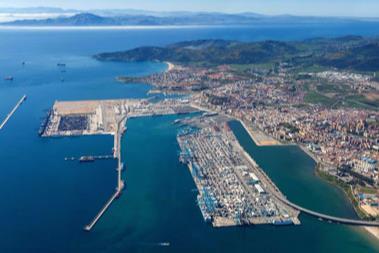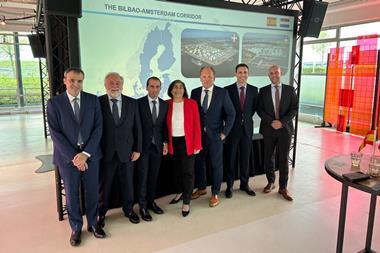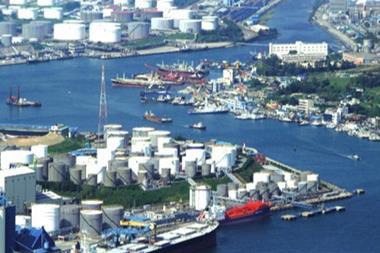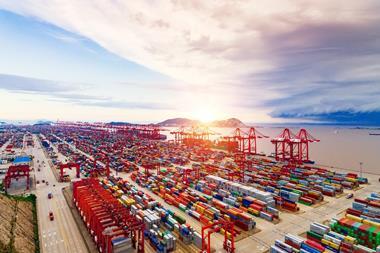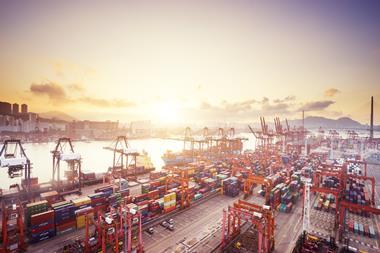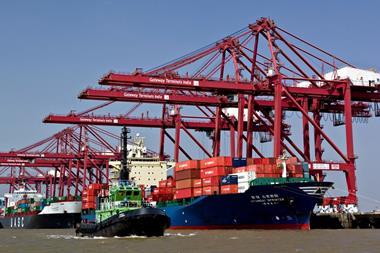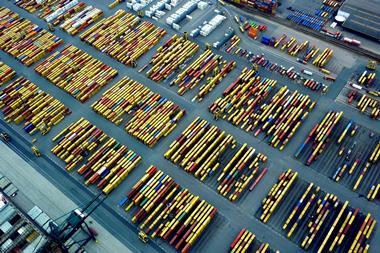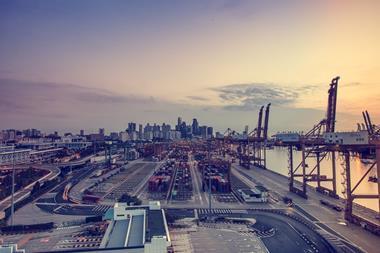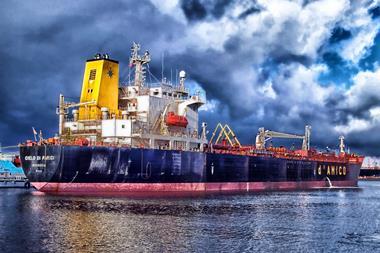Portside methanol-to-hydrogen (M2H2) may drive emissions reduction faster than ship retrofit to greener fuels. Brian Reid, Chief Sales officer, RIX Industries, argues the case for M2H2

Hydrogen has massive potential as a clean fuel in maritime applications, playing an important role in cleaning up global shipping. There is no question it’s a super fuel. But in the maritime realm, real-world hydrogen deployment hinges on solving its inherent complexities regarding storage and handling. It’s an infrastructure dilemma that represents vastly different challenges and opportunities for shipbuilders and ports – remedied by a new approach that leverages hydrogen-on-demand.
This is where ports can take the lead as they are poised to embrace hydrogen-on-demand more quickly and cost effectively than shipbuilders. More flexible space, more end-use applications, and increasingly competitive value from positioning themselves as a port of the future – these factors all point to port operations as a real powerhouse in the race to net zero. Hydrogen-on-demand may make all the difference, helping port operators achieve environmental goals and access an available power source that is also sensible from a purely operational perspective.
WHY DO PORTS HOLD THE KEY?
Both port and ship operators face the same environmental mandates issued by the IMO. That is, realising a 40 per cent reduction in carbon emissions as soon as 2030 and at least 50 per cent by 2050. These aggressive goals require immediate action, even as many maritime professionals may be hesitant to commit to a path while awaiting availability of greener fuels.
Ports incorporating these systems will hold the advantage as cleaner fuels become available. According to the Methanol Institute, production of renewable methanol is projected to grow, rising to as much as 50,000-250,000 metric tons per year over the next five years. However, methanol reforming is colour blind: the gray methanol of today, or the green methanol that is gradually (and expensively) coming to market, can both be used or even mixed. As green methanol becomes an economical alternative, port operators need only choose that option as a fuel source to realistically reach net zero emissions. When ports work to meet evolving IMO environmental mandates, it is critical they protect flexibility and investments in new environmental technology.
ENTER M2H2
Hydrogen is clean but complicated; enter M2H2!
The M2H2 (methanol-to-hydrogen) process is strategic to these efforts, eliminating the heavy footprint of traditional hydrogen storage by relying on methanol as a hydrogen carrier feedstock. The system converts methanol to hydrogen in a self-contained unit, generating a consistent source of pure hydrogen as if it were being pulled from a large storage tank. M2H2 units are available commercially and designed as cabinet or container-based systems. Units are scalable and modular, highly energy efficient (over 80 percent), and support a spectrum of power demands from 10 kW to MW+ applications.
Port operations benefit from the availability of complete power systems – an M2H2 reformer is paired with a fuel cell in a single-framed unit, keeping the footprint compact and alleviating the need to piece together components for a full energy solution.
For facility operators, M2H2 deployment is an experience similar to placing and integrating a diesel generator for onsite power performance, for example, to power the refrigerated containers common to most ports. Up to 300 kilowatts of power can be generated from a single 20’ unit and up to a megawatt from a 40’ unit. Depending on the number and scope of a port’s reefer population, the M2H2 would offer a bank of plugs for easy power connection.
M2H2 units can be stacked and comfortably align with port activities and their general citylike operational approach. Containerized systems can be easily relocated to provide power for various port operations and deployed wherever needed for both general port facilities and support of docked ships. What sets them apart is their exceptional cleanliness and quiet operation, eliminating the noise and pollution typically associated with diesel systems.

POWER STRATEGIES FOR FUELING VS CONTAINER FACILITIES
Ports where methanol is present in vast volumes have a significant opportunity to access the emissions reduction progress enabled by M2H2 systems. These are the ports where large cargo ships and workboats are refueled as part of general operations, with methanol bunkered and at the ready. But not every port fuels ships. Many are purely container ports and do not have onsite the substantial amounts of methanol that would allow them to take advantage of the M2H2 technology. Yet container ports also need power and must accommodate environmental mandates. An alternate fuel strategy, albeit a simple one, would be required to access M2H2 values. These facilities would need to partner with a fuel depot, often nearby major ports, for methanol access.
This added step does not create significant impact on the methanol infrastructure for a container facility, given that methanol is benign and, therefore, very easily transportable in intermediate bulk containers (IBCs). IBC tanks are modular and stackable, and each contains enough methanol feedstock to produce 1100 kilowatt hours of energy.
ALONGSIDE POWER
Ships without their own onboard hydrogen-on-demand systems can easily connect to portside M2H2 power when docking. Clean shore-to-ship power, or cold ironing, allows the power down of a ship’s dirtiest engines while allowing the hotel loads to rely on clean, quiet hydrogen. Instead of running the ship’s own methanol or diesel systems, this kind of power partnership is especially appealing as it maintains the ship’s facilities and refrigeration requirements without sacrificing emissions. Reduced emissions from at-berth ships are credited toward meeting environmental mandates, and ports can foster this as a tangible opportunity for improvement.
M2H2 plays an even greater role in port facilities that face significant weather-related disruptions to their power grids, issues that routinely force incoming ships to rely on their onboard engines while docked.
WHAT DOES THE PORT OF THE FUTURE LOOK LIKE?
Consider that a shipping operator can better meet its own emissions reduction goals – and avoid associated penalties for missed targets – by contracting with one port versus another. And port operators have the capacity to make it easier or harder for fleet owners to transition to greener performance, depending on their commitment to hydrogen availability and convenience. Furthermore, increasingly key shippers are keen to present a socially conscious message when it comes to the sale of their goods. Their desire to point to clean shipping from end-to-end means port facilities matter in the equation. And because the IMO has set a very high bar, strategically capturing every bit of progress on the path to net zero just makes sense, particularly if a port can make emissions reduction seamless.
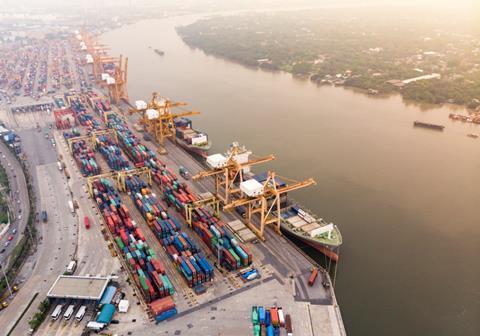
With M2H2, ports can have hybrid solutions, depending on their mission profile. This versatility removes restrictions on overall port operations, creating flexibility that effectively balances risk and reward. For example, a port facing limitations on growth based on power access or even purely geographical reasons could develop floating power barges – bringing clean, quiet power to the ships that want it. Like small cities, many port environments are actively working towards electrifying essential equipment such as cranes or drayage trucks; hydrogen-on-demand allows them to choose either fuel cell vehicles or electric vehicles. Ports can better attract refrigerated container business when they have power support beyond a traditional (and potentially dodgy) grid. Nearby residents and businesses are likely more supportive of port operations that proactively address the neighborhood’s air quality, noise, and pollution concerns.
Clean hydrogen is just good for business – and hydrogen-on-demand provides the basis for a smart hydrogen strategy.
For further information contact: breid@rixindustries.com or LinkedIn.








